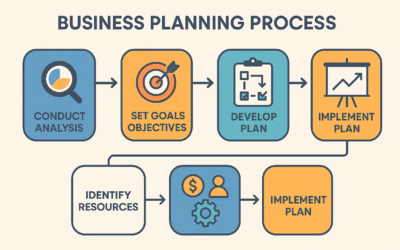If you are thinking of selling your business, or you need to know its value for other reasons, you may be wondering how to go about determining its worth. The truth is that the process can be complicated.
This is why it’s usually a good idea to work with an experienced business valuation expert. If you take a look at Global Resources LLC Reviews, you can see how important this service can be. However, it does help to have some awareness of the valuation process. There are usually three steps to take which can provide a close estimate of the value of your business.
Determine the Seller’s Discretionary Earnings
If you use the tax returns for your business to calculate revenue, the resulting figures are unlikely to be an accurate reflection. This is because most smaller businesses report expenses on their tax returns in order to reduce the burden of the tax.
This is why the SDE needs to be calculated, in order to determine the actual revenue of the business. To do this, expenses that are not essential to the running of the business need to be added back in. Some examples of expenses that may be claimed on tax returns, but should be added back in order to calculate the SDE, include:
- Salary of the owner or owners.
- Perks of the business such as personal travel.
- Expenses such as depreciation and amortization.
- Donations to charity.
- One-time expenses are not likely to be repeated.
Calculating the SDE is the first stage of the process.
Working out the right SDE multiplier for your business
This is where the process becomes a little more complicated. This is because working out an SDE multiplier is not an exact science. There are several factors to be taken into account such as the location of the business, the current situation within the industry, the size of the business and what tangible and intangible assets are available.
If your business is within a growth industry then the SDE multiplier is likely to be higher. You can take a look at suggested industry multipliers online. However, you also need to factor in considerations such as how dependent the success of the business is on the current owners. This could obviously have an adverse effect on the multiplier and the eventual valuation.
At this point in the process, it’s often necessary to get help from a business valuation expert. Once the SDE multiplier is known it’s time to move on to the third stage of the valuation process.
Add the assets of the business and subtract the liabilities.
In most cases, when a smaller business is sold, the buyer usually gets the tangible and intangible assets of the business. The seller usually retains the liabilities. This is why the assets and liabilities of the business need to be calculated.
Assets can be tangible or intangible. They are items or factors that have not been included in the SDE calculation. Tangible assets are physical things that are owned by the business, such as business premises. Intangible assets have no physical presence but still, have value. This can include items such as trademarks or patents.
Liabilities are financial obligations, including debt, which the business is responsible for paying. Normally, the seller maintains responsibility for the liabilities and pays them off with the proceeds of the sale.
Once the number of liabilities has been subtracted from the total financial value of assets, you can move on to the fourth stage of the process.
Business valuation formula
The final stage of the process involves using the business valuation formula to calculate the value of the business. The formula works as follows:
SDE x SDE multiplier + assets – liabilities
It’s important to say that this is a simplified version of the valuation process. In order to get a more accurate picture of the value of your business, you should work with a business valuation expert.

0 Comments